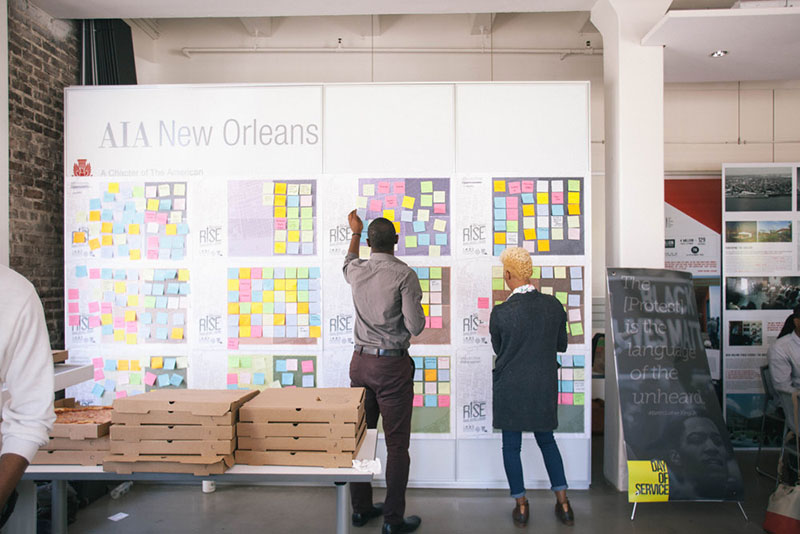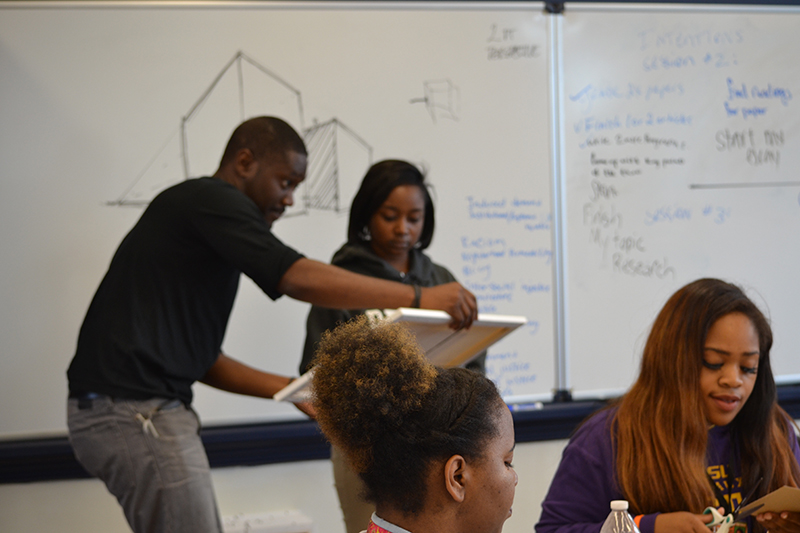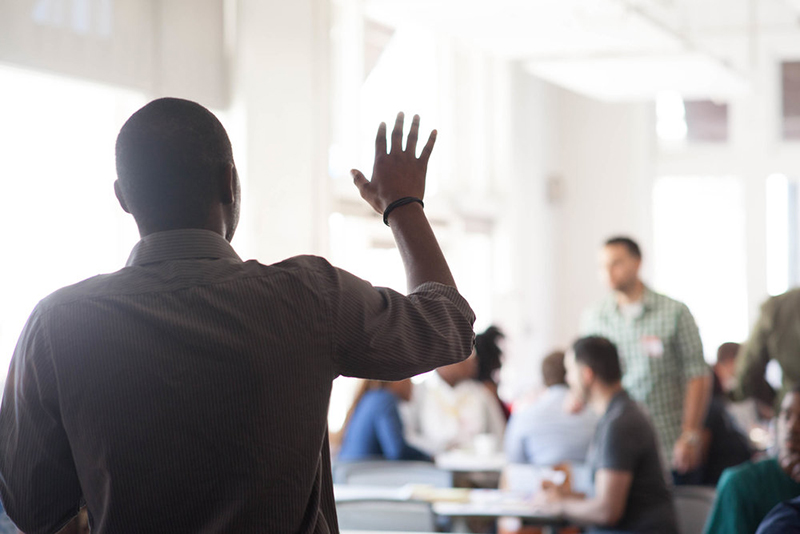
January 2, 2018
Architecture for the People: Bryan C. Lee is Taking Trust Back into Public Spaces

In November 2016, the CEO of the American Institute of Architects, Robert Ivy, sent a congratulatory letter to the incoming Trump Presidential administration pledging the close collaboration of its 89,000 members on infrastructural projects totalling some $500 billion of public investment over the next five years. The missive caused widespread outcry among the architectural community and reignited feelings of mistrust that are still proving hard to shake.
“Nobody trusts anybody,” observes Bryan C. Lee, a New Orleans-based architect and CEO of Colloqate Design. “If you have any connection to a public project, people believe that you are a servant of the government, and that you don’t ultimately care about what the people have to say—everything you do is just a ploy to get votes.”
For a practitioner working exclusively in the public sector, this has complicated life for Lee. “You have to fight that narrative constantly, and just try to make sure that people understand that it’s only for their sake that we are trying to do this work. That’s hard when people have been scarred so many times. People have come into neighborhoods, done planning processes and left and said, ‘We’ll do what we want now that we’ve heard from you. It doesn’t really matter what you said, we’re gonna go ahead and do this work regardless.’ That’s a problem.”
Of course this isn’t a problem unique to the current administration—Lee witnessed systemic inequality in architecture long before he began his training. His grandmother’s house is located in an area of New Jersey littered with burned-out buildings, boarded up with plywood for over 30 years. Seeing the state’s long-term indifference to these neighborhoods spurred Lee to pursue a career in architecture himself. “Architecture is the most democratic and the least democratically used tool,” he says. “It was never about the pretty thing for me, it was always about how to make life better for individuals and the body politic, the collective.”

To this end, Lee left his position as director of place and civic design at the Art Council of New Orleans and founded Colloqate in early 2017 to focus on “expanding community access to, and building power through the design of social, civic, and cultural spaces,” through the organization’s mission to intentionally organize, advocate, and design spaces of racial, social, and cultural equity.
In its first year of operation, Colloqate has spearheaded a number of projects to help communities claim back sovereignty over public space and confront injustice in the urban landscape (he discusses this further on AIGA’s Design for Good webcast series). The first, Paper Monuments, invited participants to imagine new ways for the city of New Orleans to celebrate its rich 300-year history in the wake of the removal of controversial Confederate monuments. Lee collected stories and images from members of the local community and then projected the outcomes onto the former base of a statue of Confederate Commander Robert E. Lee.
“Architecture is the most democratic and the least democratically used tool,” he says. “It was never about the pretty thing for me, it was always about how to make life better for individuals and the body politic, the collective.”
These types of activities are what Lee calls “design as protest”: projects that show an “unyielding faith in the potential for a just society,” he says. “Protest is ultimately about hope. It is about hoping for a better tomorrow, and that’s what I want this work to be about consistently, to have an unyielding faith in our neighborhoods, our communities, our people, and in our work to be a part of that process, and not to be a hindrance.”
Much of Lee’s work hinges on fostering stronger relationships between communities and developers, embedding rigorous public consultation into the early stages of the design process. “We’re trying to convince public and private developers that anything they develop is a public or civic design opportunity to connect to communities in a real, tangible way. The more we’re able to convince developers of that as a purpose in their work, the more we can change the dialogue that happens in particular neighborhoods.
“How do you write that community engagement is a necessary part of the process into an RFP? How do you make sure that they hire design advocates who are actively of the neighborhood that have a say in process? And then from the city side, how do you make sure all this is a requirement from every level of the approval process? Our ultimate goal is to put all this into the overall structure of the system so that the outputs become more socially lead.”

Currently, Lee is putting these ideas into practice in a redevelopment project under the I-10 Highway in New Orleans, rebuilding a community permanently damaged by the destruction of some 50 residential properties and surrounding businesses in the late 1960s. (Far from unique to New Orleans, many industrial cities in the United States, like Detroit, Newark, Pittsburgh, and New York saw an influx of infrastructural and highway development through existing neighborhoods in the postwar era.) “Ultimately,” Lee says, he’s “trying to create a space where culture and economic alignment is made.”
Residents and stakeholders alike have appeared receptive to Lee’s involvement, although he admits there have been some barriers. “Ultimately, communities do not like to see change,” he says. “There’s always the excuse to try to figure out why not to do something. You’ve got to figure out how best to make sure that all of the issues of community are fulfilled and are addressed, and that you’re talking to people in a way that feels consistent. But we’ve done five months of community engagement before getting into deep design work, and that’s actually unheard of in a lot of ways.”

Lee is also countering public scepticism through education, finding new ways to teach communities about architecture’s potential to counter social injustice. He’s working on a board game called The Just City in which players must work together to build sustainable neighborhoods. “Players start to understand the ways in which the city’s origins—the application of policies and procedures—have implications on the city itself. Then they’ve got to combat it together as a giant group.”
“Protest is ultimately about hope. It is about hoping for a better tomorrow, and that’s what I want this work to be about consistently, to have an unyielding faith in our neighborhoods, our communities, our people, and in our work to be a part of that process, and not to be a hindrance.”
The end goal is increased political and social literacy—themes he’s exploring further with projects like Who’s Gerry? which aims to show the injustice of partisan gerrymandering by creating interventions that show how the shapes of voting districts have changed with population demographics over time.
Can all of this positive work repair the damage done by decades of neglect? “Oh yeah,” says Lee. “Luckily a lot of people have checked the shit out of the AIA and told them how mismanaged they’ve been when it comes to this particular administration.
“When you don’t have trust in any arena it’s hard for communities to believe that things will come out right. I don’t have answers as to whether it’s all going to work, but I’m always hopeful.”
Observed
View all
Observed
By James Cartwright
Recent Posts
DB|BD Season 12 Premiere: Designing for the Unknown – The Future of Cities is Climate Adaptive with Michael Eliason About face: ‘A Different Man’ makeup artist Mike Marino on transforming pretty boys and surfacing dualities Designing for the Future: A Conversation with Don Norman (Design As Finale) Innies see red, Innies wear blue: Severance’s use of color to seed self-discovery



